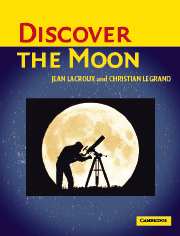Preface
Published online by Cambridge University Press: 05 August 2012
Summary
Ever looked at the Moon through a telescope? You have? Then you will have felt ‘astronomical awe’ for yourself.
The Moon … It is the strangest place! A rough, dry mineral sphere with a cloudless sky that is inky black even in bright daylight, waterless seas decked in dust that no winds ever blow, and worn mountains that have never echoed to the slightest sound … It is understandable, then, why our satellite should be the favourite target for aspiring astronomers. And it is to help them to become better observers and to enjoy their discoveries to the full that this book has been devised.
It is all very well to stand and stare, but it is so much better to understand what you are looking at. You will want to see the most interesting and most intriguing regions of the Moon. But how do you find them in your telescope's field of view? When is the best time to look for them?
Then, with a little experience, you will be able to keep a watch on places where ‘something’ might be going on …
The Moon is easy enough to observe even with the light pollution of modern cities. Even the smallest telescope will show the maria or ‘seas’, countless craters and a few mountain ranges. The Moon's spectacular relief and the wondrous calm of its desolate landscapes viewed through a telescope lend it a fascination you will never tire of.
- Type
- Chapter
- Information
- Discover the Moon , pp. 3Publisher: Cambridge University PressPrint publication year: 2004



